As Ontario progresses through the phases of reopening, many businesses find themselves making crucial decisions on how to safely return back to their office buildings. There are a number of factors decision-makers must keep in mind while developing returning to work protocols including how to effectively maintain physical distancing protocols, while abiding by local sanitation regulations and ensuring peace of mind to all staff.
Many business owners, particularly small business owners whose cash flow has been significantly impacted by COVID-19, find themselves scrambling to prepare safe, sanitized work environments in a cost-effective way.
Various globally operated companies are leading the way by adapting lessons learned during the reopening of Asia based offices to the rest of their facilities. One corporation in particular, global real estate firm Cushman and Wakefield developed a 36-page guide using internal research from over 53,000 professionals across the UK, Asia, Canada and the United States.
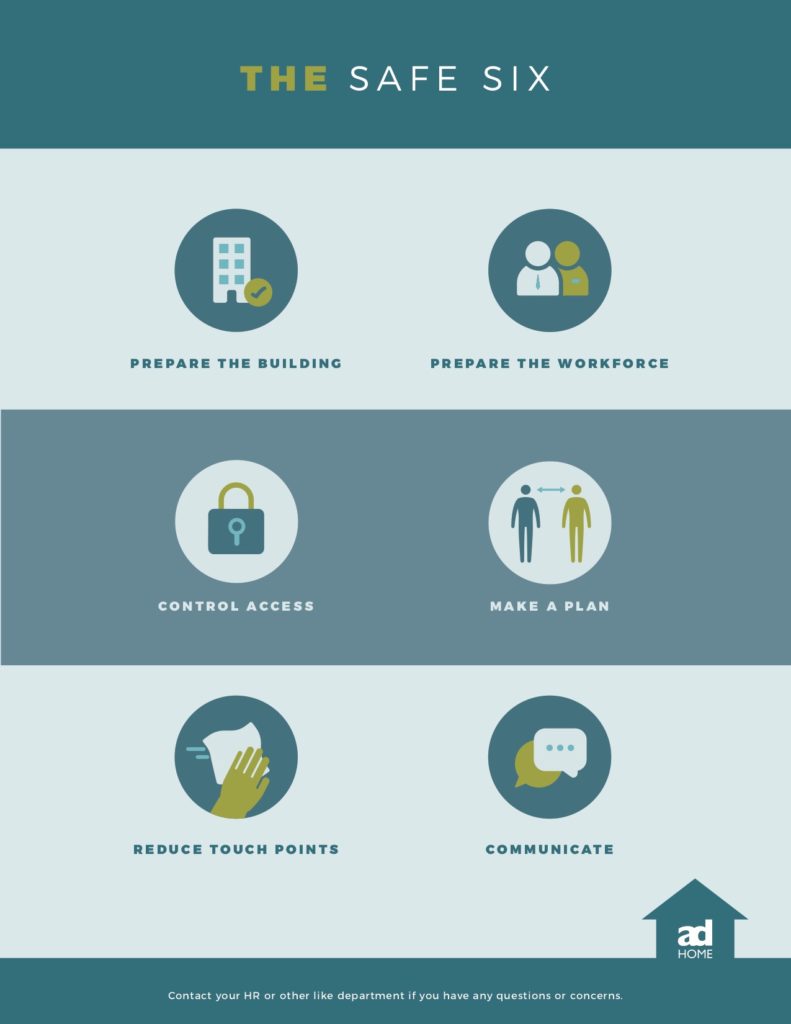
You can check out Cushman and Wakefield’s Safe Six Checklist and download their full guide for free here.
The health and safety of your workforce is of the utmost priority at this time, with employees looking to leadership to get them back to work safely. That in mind, we have taken the research of Cushman and Wakefield, along with a number of other sources, to develop a basic 4 step guide to start developing your return to office plan!
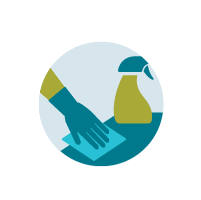
Produce a cleaning plan
Sanitization and proper cleaning have become a significantly bigger priority to employees. From handwashing to disinfecting, a thorough and clear plan for how you plan to keep your office clean must be developed.
One of the most highly recommended workplace cleaning strategies post-COVID is to introduce what is known as a visible clean. Prior to the pandemic, most cleanings occurred outside of office hours when staff are not present. Now, experts encourage going this in front of employees in order to establish psychological comfort in the workplace and encourage productivity.
In addition to transparent cleaning measures, providing hand sanitizer or setting-up personal sanitizing stations is globally recognized as being a key factor to slowing the spread of germs and in turn COVID-19.
Of course, it goes without saying that all cleaning should be done in accordance with local, provincial and federal regulations in your area. For Canada’s COVID cleaning recommendations for public spaces, please see here.

Control access to building and employee return
All employees are different, which is what makes a work-team so wonderfully unique. However, this also means that each individual team member will have individual needs and requirements for the safe return to work. For example, employees with young or elderly family members at home, long-term health conditions, or high contact positions will be wary to return to a shared workspace.
Now is the time to evaluate your team and make decisions on who should come back and when. If there are positions in your company that can continue to work from home, it is best to maintain this practice to limit the number of bodies in the office.
One common recommendation is to implement a sort of team-based, or shift schedule to limit interaction and the possible spread of germs. By doing this, you put your company in a position where you can continue with business if an employee becomes sick. To explain, say for example you have Team A and Team B. If someone on Team A falls ill, you can isolate that team for two weeks by having them work from home while Team B continues in office operations.
When setting up measures to control and monitor access to workspaces, be sure to consider your employees’ privacy as well as again being aware of local laws and protocols.

Develop a physical distancing plan
Obviously, it is widely understood that the best practice is to maintain 2 meters or 6 feet away from other people. So, it’s time to break out the tape measurer. Make sure that if you are not willing to invest in some sort of space divider that all desks and workstations are a minimum of these dimensions apart.
Another recommendation is something that we have all seen in essential places such as grocery stores throughout the pandemic. That is the little arrows and directional markers indicating which direction people should walk to limit close encounters. This can be easily achieved by simply making arrows out of tape, or designing and developing custom arrows. The choice is up to you depending on how much you are willing to spend.
It may also be a good idea to not cancel that Zoom subscription yet. Even though office spaces are able to be open, it is a good idea to continue to limit non-essential face to face interactions. It is in best judgement to limit in-person meetings to the space that you have. To explain, the 2 metres or 6 feet rule must still apply in the boardroom. Therefore, if you only have a small space, be aware and plan attendance accordingly. Many global companies have found themselves continuing to use Zoom or other video conferencing platforms to host meetings while the attendees are under the same roof.
A physical distancing plan also includes the acquisition and distribution of personal protective equipment or PPE. Masks, gloves, face shields, and hand sanitizer should be provided to staff upon arrival every day. A proper disposal system must also be planned, so keep this in mind.

Welcome employees back
After over four months of being connected virtually, or away from work completely, the return to office is an uncertain time for many employees. To combat this wariness and to reinforce company values and culture, we highly recommend developing some sort of welcome back package. Within this package should be a number of both personal mementos and informational resources.
For example, some great ideas for a welcome back package could be;
- A personalized, reusable fabric mask
- A bottle of hand sanitizer for their workspace
- A company statement clearly describing safety measures put in place
- A guide to the new protocols and contact information for HR or other like department to go to about any questions of concerns
At this time, it is crucial to be abundantly clear and transparent with your staff to foster both trust and peace of mind. This in turn will create a more productive and efficient team and environment as focus can be on work as opposed to fears for well-being.
As we move towards a new normal, business owners and leadership are responsible for the general well-being of their workforce. By using these 4 steps, you will be well on your way to developing a safe and detailed return to office plan. Remember though, that many companies will have to quickly adapt as the situation evolves and as restrictions are lifted and tightened throughout the coming months.
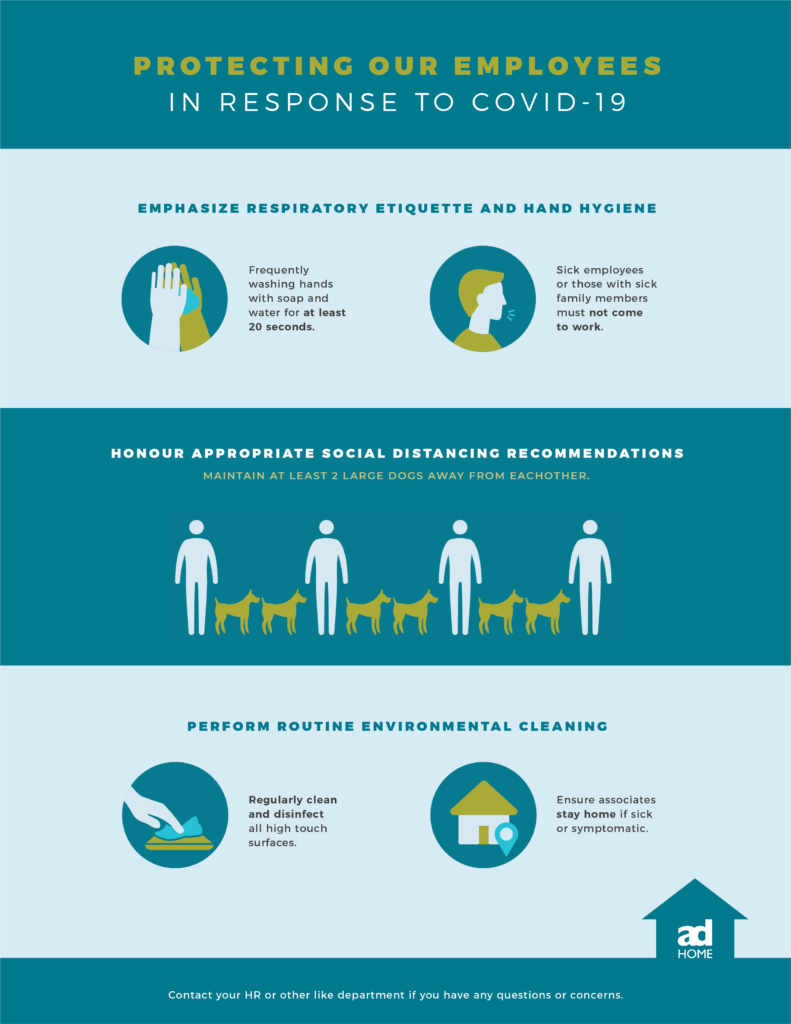

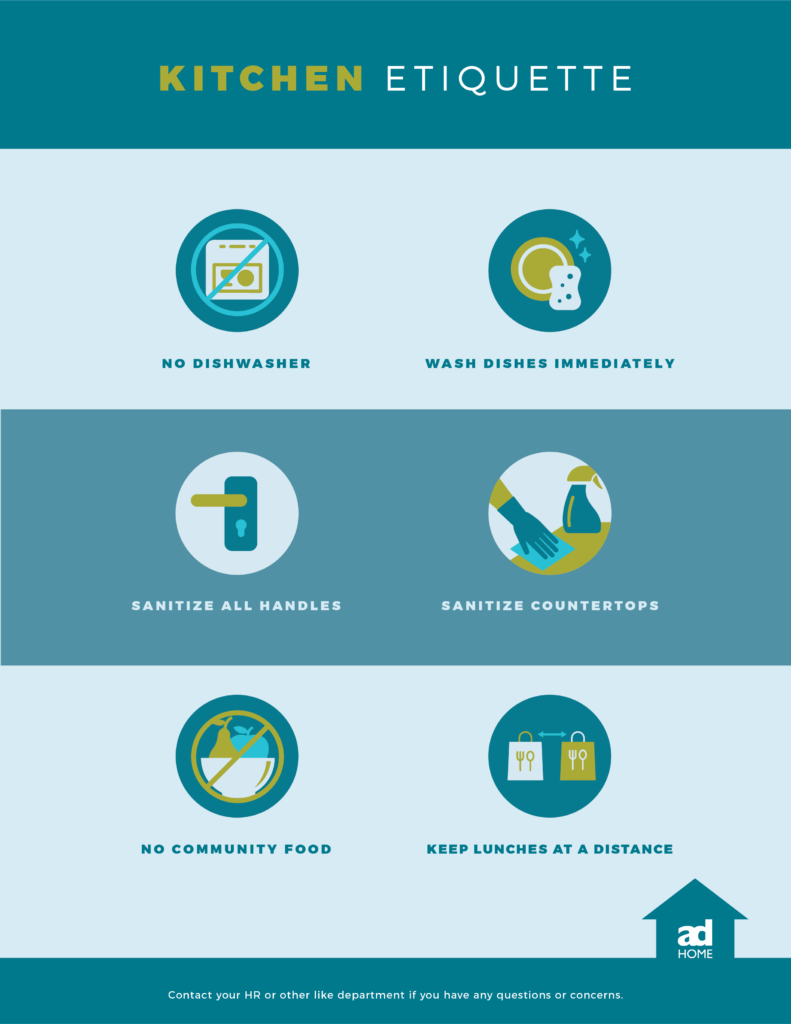
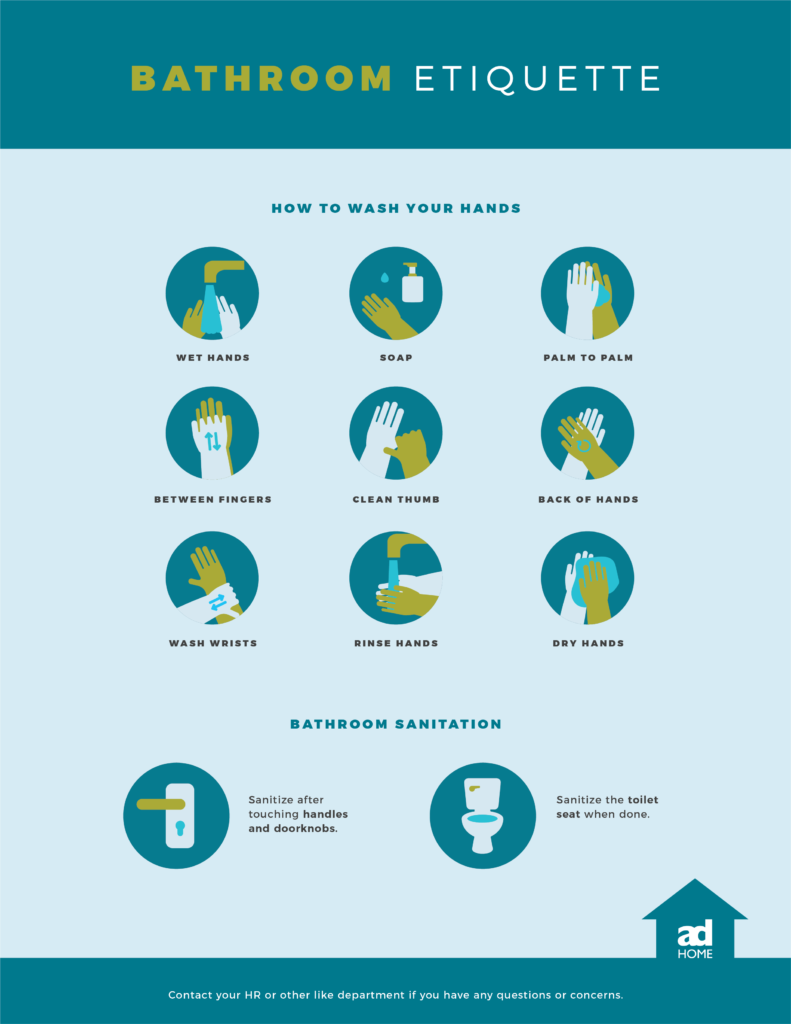
You can download the above infographics for distribution and print here.
Disclaimer: adHOME Creative is a creative advertising agency and does not work in the medical industry. We are therefore not health careprofessionals nor specialists. Our PDFs uses information from resources created and distributed by Canadian health care professionals.
If you have any questions or concerns about COVID-19 in the work place, please refer to your local COVID-19 Guidelines or ask your HR Representative today.
Resources: